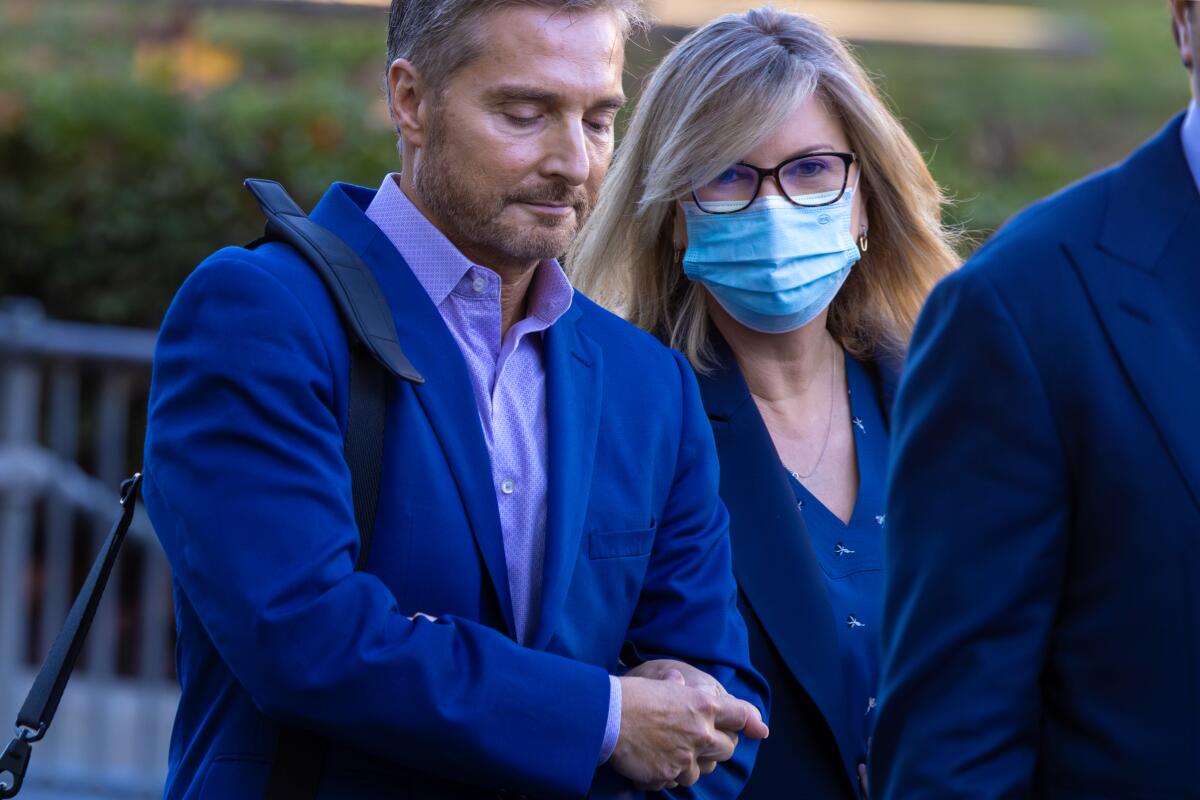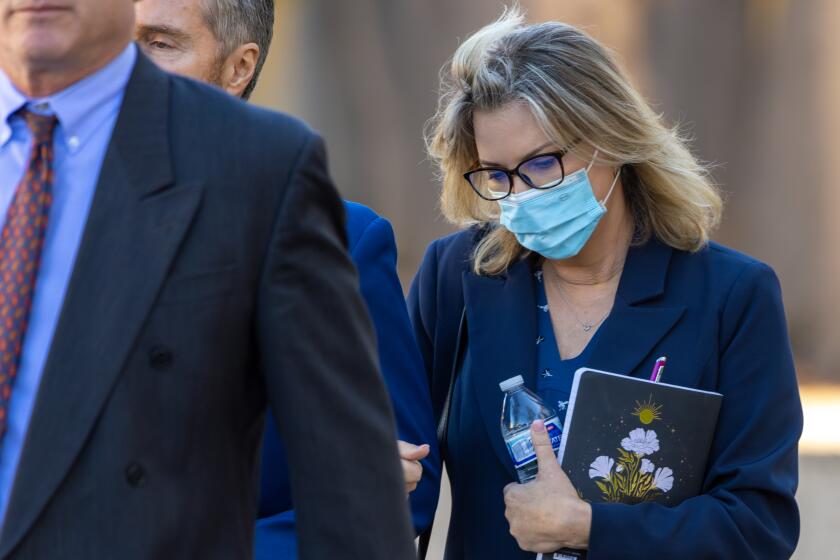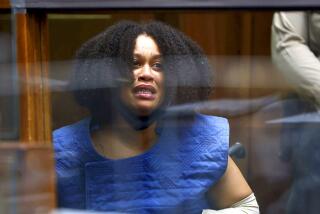Rebecca Grossman was impaired before deadly crash, investigator testifies

- Share via
On the same night two young boys were killed in a Westlake crosswalk, Rebecca Grossman had a cocktail.
Court documents show that the L.A. socialite also had Valium in her system. That drug had an “additive” effect on the alcohol, impairing her judgment, and she later barreled into the two children, an expert witness and prosecutors maintained Monday at her murder trial.
People who “have one beer plus Valium, that may feel like five beers,” the Los Angeles district attorney’s drug recognition expert, Det. Michael Takacs, told jurors Monday.
Defense attorney Tony Buzbee immediately objected, noting that the amount of Valium was “unknown.” He says the amount was minuscule.
Grossman’s lead attorney has throughout the trial argued it was Erickson’s black SUV — not his client’s white Mercedes — that first struck the children.
Grossman, 60, is charged with two counts of second-degree murder, two counts of vehicular manslaughter with gross negligence and one count of hit-and-run driving resulting in death. Prosecutors say after having cocktails with her then-lover, former Dodgers pitcher Scott Erickson, Grossman went on to speed dangerously and crashed into the boys as they crossed Triunfo Canyon Road behind their mother. Prosecutors have told jurors she drove as fast as 81 mph before hitting Mark and Jacob Iskander, 11 and 8, on Sept. 29, 2020.
A breathalyzer at the scene of the incident showed Grossman to have a blood alcohol level of about 0.075%; a blood test three hours later came back at 0.08%. California’s legal limit is 0.08%.
Takacs testified that a blood alcohol level like Grossman’s would result in signs of impairment. He said she also tested positive for diazepam or Valium, a psychoactive that acts on the central nervous system and is a depressant like alcohol.
Prosecutor Ryan Gould asked Takacs to explain how Valium can interact with alcohol. “It creates what you call an additive effect,” Takacs said.
Vanessa Meneses, supervising senior forensic scientist at the Orange County Crime Laboratory, testified that criminalists in the lab reexamined Grossman’s blood sample and found caffeine; norfluoxetine fluoxetine, commonly sold under the name Prozac; and nordiazepam, a metabolite of Valium. The blood alcohol level, which is tested twice, was 0.074% and 0.073%. It is not unusual, she said, when a blood sample is opened multiple times for it to lose ethanol content, much like a soda bottle opened multiple times loses its fizz. Asked by Deputy Dist. Atty. Jamie Castro what effect Valium would have when added to alcohol, Meneses echoed Takacs, referring to its additive effect.
Although Grossman is not charged with driving under the influence, prosecutors are alleging her reckless behavior amounts to implied malice, a requirement for them to prove second degree murder.
Under cross-examination from Buzbee, the investigator acknowledged that Valium was not found in Grossman’s purse or in the white Mercedes SUV she was driving that night, and that the drug could show up in her system even if she had taken it days earlier.
A criminalist with the L.A. County Crime Lab testified that Grossman tested positive for benzodiazepines — of which Valium is a type — but the criminalist could not say how much.
While questioning Takacs, Buzbee repeatedly referred to the amount of Valium in Grossman’s blood as minuscule. “I don’t know if it is a trace amount,” the investigator countered.
Takacs told prosecutors that he saw signs of impairment in video of Grossman’s field sobriety test administered after the deadly crash — although he said the test was replete with errors. Last week, L.A. County Sheriff’s Deputy Michael Kelley admitted under cross-examination by the defense that errors were made in administering the test.
In the second day of witness testimony at Rebecca Grossman’s trial, witnesses say they saw boys killed. No single witness saw both children struck.
Takacs said signs of impairment during the test included Grossman taking nine steps instead of eight and swaying during the one-leg-stand test. He said she also kept her eyes open on the finger-to-nose test.
But the investigator said he was basing his assessment on “the entire picture,” including her behavior after her vehicle stopped after the incident, disabled by its safety system. A deputy previously testified that Grossman said “she did not know what was going on. She said she hit something, but she didn’t know what she hit.”
According to court testimony, Grossman and former Dodgers player Erickson, 55, had been drinking cocktails at a restaurant before the crash. They were with retired baseball player Royce Clayton, who testified previously that Erickson drank two margaritas and Grossman one. He said Grossman did not seem to be impaired when she left the eatery.
Buzbee, Grossman’s lead attorney, has argued throughout the trial that it was a black 2016 Mercedes AMG SUV driven by Erickson — not his client’s white Mercedes SUV — that first struck the children. He also alleged to jurors that Erickson hid in some nearby bushes after the crash and watched the aftermath of the incident unfold.
More to Read
Sign up for Essential California
The most important California stories and recommendations in your inbox every morning.
You may occasionally receive promotional content from the Los Angeles Times.












